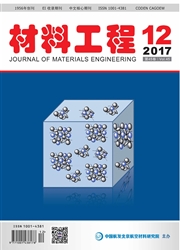

 中文摘要:
中文摘要:
在熄灭并且划分的碳,锰,和硅分发(Q&P ) 钢在划分过程期间被调查揭示散开行为。微观结构和化学作文借助于扫描电子被分析显微镜学(SEM ) ,传播电子显微镜学(TEM ) ,和三维的原子探查。学习 Q&P 钢由马氏体板条和显示出非凡的阶段转变稳定性的薄、像电影的保留的奥氏体组成了,这被显示出。碳原子主要在更高的划分温度从马氏体扩散了到保留的奥氏体。在在 400 潤湷潰牵划分的试验性的钢?
 英文摘要:
英文摘要:
Carbon, manganese, and silicon distribution in quenching and partitioning (Q&P) steel during partitioning process was investigated to reveal the diffusion behavior. The microstructure and chemical composition were analyzed by means of scanning electron microscopy (SEM), transmission electron microscopy (TEM), and three-dimensional atom probe. It is shown that the studied Q&P steel consisted of martensite laths and thin, film-like retained austenite showing extraordinary phase transformation stability. Carbon atoms mostly diffused to the retained austenite from martensite at a higher partitioning temperature. In the experimental steel partitioned at 400℃ for 10-60 s, carbides or cementite formed through carbon segregation along martensite boundaries or within the martensite matrix. As a result of carbon atom diffusion from martensite to austenite, the carbon content in martensite could be ignored. When the partitioning process completed, the constrained carbon equilibrium (CCE) could be simplified. Results calculated by the simplified CCE model were similar to those of CCE, and the difference between the two optimum quenching temperatures, where the maximum volume fraction of the retained austenite can be obtained by the Q&P process, was little.
 同期刊论文项目
同期刊论文项目
 同项目期刊论文
同项目期刊论文
 期刊信息
期刊信息
